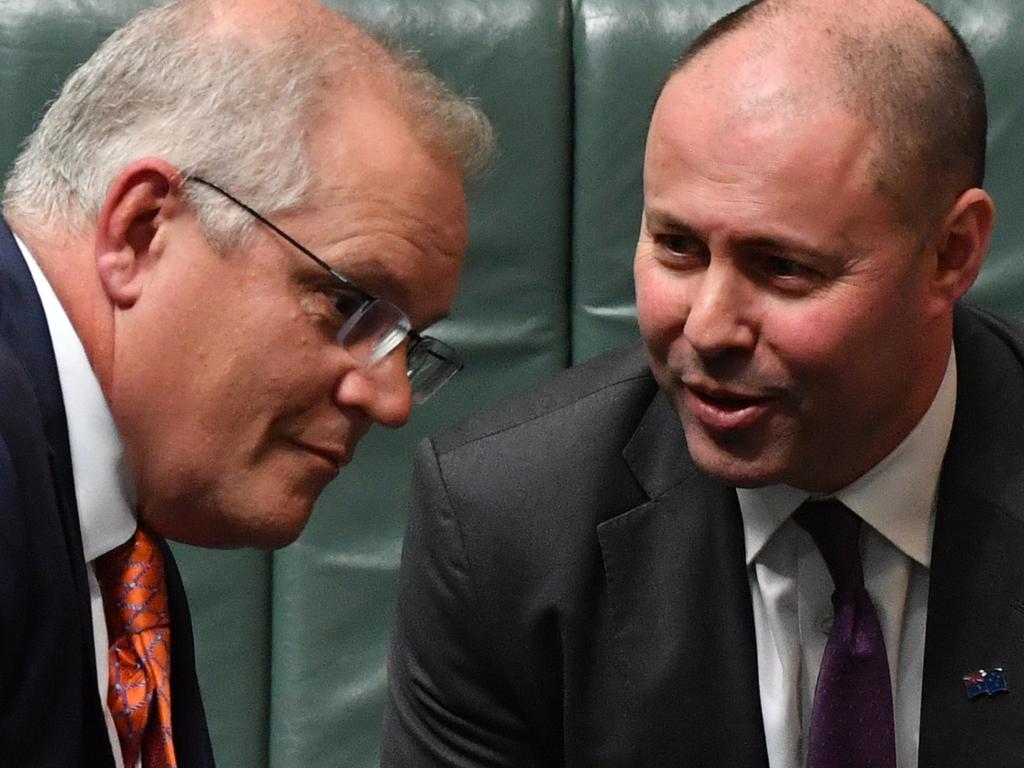
Currently, the commentariat is amusing itself by dancing about, doing an ideological hokey-pokey; left, right, shake it all about. Should the Liberal Party move to the right? Should it reclaim the centre? Should it forsake heartland seats it had lost to the Teals and Greens to become a political nomad?
The future of the Liberal Party is being scrutinised to within an inch of its life with not a moment’s thought to just how awful the party’s campaign was. While the media fixated over Albo’s stumbles, voters grimly determined the abrupt termination of Scott Morrison.
The Liberals decided on a presidential style campaign. This meant almost everything relied on supplying the nation with a sumptuous diet of the face and voice of the Prime Minister touring the country, including large parts of it where he was deeply unpopular.
It is the sort of unpopularity not best expressed in polling where people talking on the telephone are too nice to tell the pleasant voice down the line what they really think. But up close and personal around the country – in South Australia, Victoria, New South Wales, it was visceral.
In Western Australia, it had become a smouldering anger.

Back in June last year, the government had flirted with the idea of supporting Clive Palmer’s legal action against the state of Western Australia over border closures. For two months, the Morrison government made submissions and supplied expert evidence calling for the border closure to be lifted before withdrawing from the case in early August.
The insinuated mockery from supporters of the Liberal Party was that Western Australia was North Korea with better food. Well, maybe not better. More.
Last Saturday, the Liberals preferenced Clive Palmer’s UAP. Unsurprisingly, WA voters had the cricket bats out. The Gray-Nicolls or the Gunn & Moore? You decide.
Swan and Pearce were already presumed to be in the Labor column. When the votes were counted, Hasluck was gone in 15 minutes too, and in Tangney, where a 9.5 per cent swing was required to unseat the sitting Liberal MP, Ben Morton, Labor’s multilingual dolphin trainer, Sam Lim was hailed the victor within an hour. On average there was an 11 per cent swing against the Liberal Party in all Western Australian seats. The exception was Andrew Hastie in Canning where the swing against was a more modest 6.74 per cent, two party-preferred.

Early in the campaign, I wondered out loud if Scott Morrison would visit Western Australia at all. In a classic piece of punditry-crushing timing, it turned out he did that very day. The really astonishing trip across the Nullabor came in the last week of the campaign. It was a move that made me think that perhaps the Liberal Party knew something we did not. It transpires they appear to have known nothing of what was coming their way and instead decided to make matters worse.
We’ll never know precisely just how many votes were lost as a result of that last whirlwind visit to Perth, but the rough estimate is plenty.
It wasn’t just Western Australia. How many times did Morrison visit Victoria’s Corangamite? Six by my count and look what happened there. The sitting Labor member, Libby Coker won what has been a marginal seat for a decade with a six per cent swing.
The presidential campaign was to an extent created by necessity. The Liberal team was in disarray. Star performer, Josh Frydenberg was busy in an ultimately failed attempt to retain his own seat. The Another star, Greg Hunt was wandering off into retirement. Alan — is he or isn’t he in cabinet? – Tudge was lying low. Karen Andrews was almost invisible. Jane Hume and Simon Birmingham did some heavy lifting and were impressive, but they were senators not up for re-election.
On ANZAC Day, Peter Dutton made the extraordinary statement that Australia should prepare for war. If this was designed to be a vote winner, a shift of strategy towards a pale khaki election, it was an abject failure as well. Seats with large Australian-Chinese populations swung hard against the Liberals. In Bennelong, Reid and in Chisholm – all Labor gains, the swing nudged 8 per cent against the Liberal candidates. The UAP and PHON vote in these seats was negligible.
Without pause for reflection, the Liberal Party will almost certainly turn to Peter Dutton as its leader, in the knowledge that his interventions in the campaign were in no small part responsible for the loss of three Liberal seats.
The Liberal Party’s campaign was probably cooked before it began but once it started it merely played into Labor’s mantra of a tired, worn-out government past its use-by-date. In the end it was a Hail Mary play, a tilt at Miracle 2.0 ignoring the fact that political miracles don’t happen every three years if they happen at all.
Rather than an ideological two-step, the loss has to start with a review of the campaign and the events that led up to it. The starting point is that Labor did not win the 2022 federal election. The Coalition lost it. As it stands, the will of the people is a tepid expression of endorsement, but Albanese’s Labor has majority government and a clear pathway through the Senate to get its legislation through. It is now master of its own fate.
It will be an uncomfortable time for Scott Morrison not just because he must wear the bulk of the responsibility for the defeat but in the dark business of politics, his party needs to cast him as the villain before it can move on.






It doesn’t take long. On the rare occasions when Australians determine to hurl a federal government from power, the post-mortems always fly thick and fast.